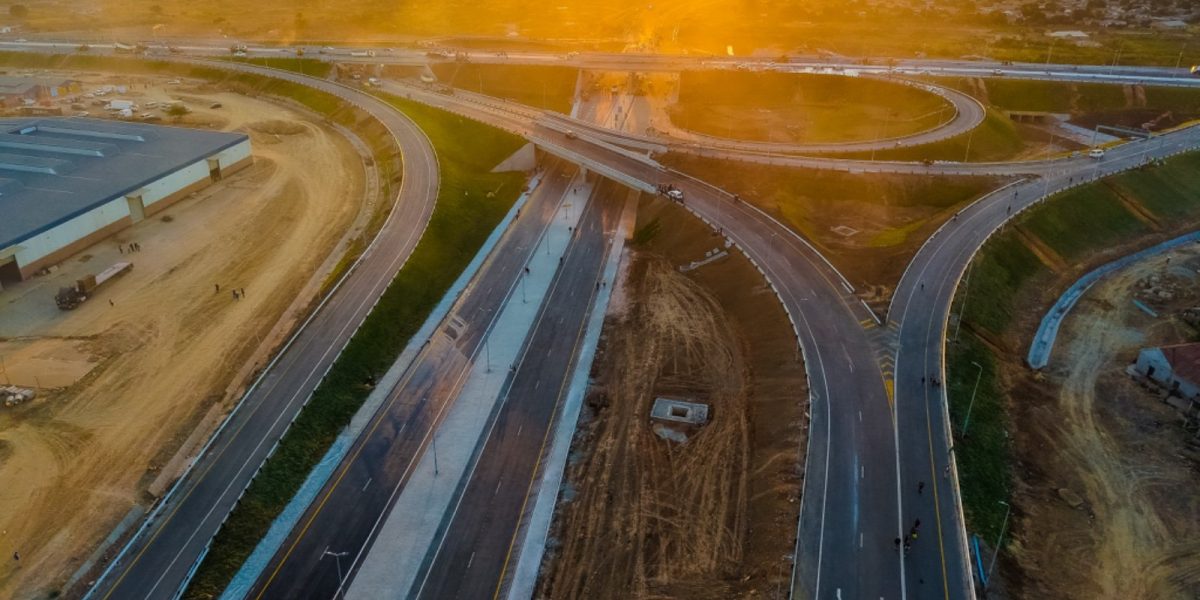The cost of Harare’s Trabablas Interchange has sparked intense online debate, with allegations of inflated costs and millions stolen.
newZWire has investigated the project’s true cost and funding sources, revealing that the design was led by two South African consulting engineering firms: Ovum Corporation and DNMZ.
Ovum Corporation was co-founded by civil engineers Nicholas Featherston and Susan Green, while DNMZ, established in 1997, is run by Zimbabwean civil engineers Tendai Madzikanda and Alex Nyoni. According to Ovum:
The real design work commenced for the project in late 2021, with various investigative site visits being made to clarify the geotechnical conditions, design scope and responsibilities.
Upon completing the interchange, Nicholas Featherston described the project as “an awesome experience to be involved with.”
According to Ovum, the total cost of the interchange structure was $65 million. The company said:
The total cost of the project is currently estimated at US$88 million, which is allocated as US$65 million for the interchange structures and US$23 million for temporary detour works, relocation costs and professional fees.
DNMZ said that its $65 million cost estimate only covers the interchange structure and does not include additional components of the project, which contributed to the overall cost. The company said:
Please take note that for the project implementation of such as complex structure it will involve the following which we were not involved in; relocation of services costs, professional fees of the other consultants, electrical engineers, quantity surveyors, mechanical engineers, EIA specialists…cost of enabling works such as detours and traffic accommodation, compensation of property owners, relocation of people affected by the works, complexities associated with working on live site and payment of royalties for extraction of gravel and aggregates.
The project is being constructed by Tefoma, a joint venture that includes Tensor Systems, Obey Chimuka’s Fossil Contracting, and Masimba Holdings.
Local engineers are overseeing the construction, led by Project Director Lawrence Mberikwazvo from Masimba.
Regarding the funding of the project, the newZWire report states that the contractor provides the funding to build the project, and the government repays them over time. It reads:
The project is financed through a vendor financing model — this means the contractor provides the funding to build the project, and the government repays them over time.
In February 2023, government gazetted an $88 million loan agreement with the consortium. It matures this week, June 6, just in time after the ‘handover’. The loan was at a 5% interest rate with a grace period of nine months.
Part of the loan is being repaid using funds Zimbabwe received from the IMF’s Special Drawing Rights — a US$958 million COVID-related windfall in 2021.
Treasury allocated US$144 million from this to roads. Not all of this went to the interchange, as it was also reserved for the Masvingo highway and local roads rehabilitation under the ERRP projects.
However, the Treasury didn’t say how much of the IMF money was used to service the loan. For 2025, government allocated ZWG100 million (roughly US$3.7 million) towards the interchange.
As for the project itself, it includes 15 bridges and spans 12 kilometres of paved roads within a nine-square-kilometre area.
Initially, a Cabinet Ministers’ Committee responsible for naming public infrastructure decided to call it the Simon Mazorodze Interchange, honouring the national hero and the road it connects to.
However, after all approvals were secured, it’s reported that one Cabinet Minister suggested a different name: Trabablas, which is President Emmerson Mnangagwa’s wartime nickname. Unsurprisingly, the rest of the committee quickly fell in line with this change.
More: newZWire



Back to top